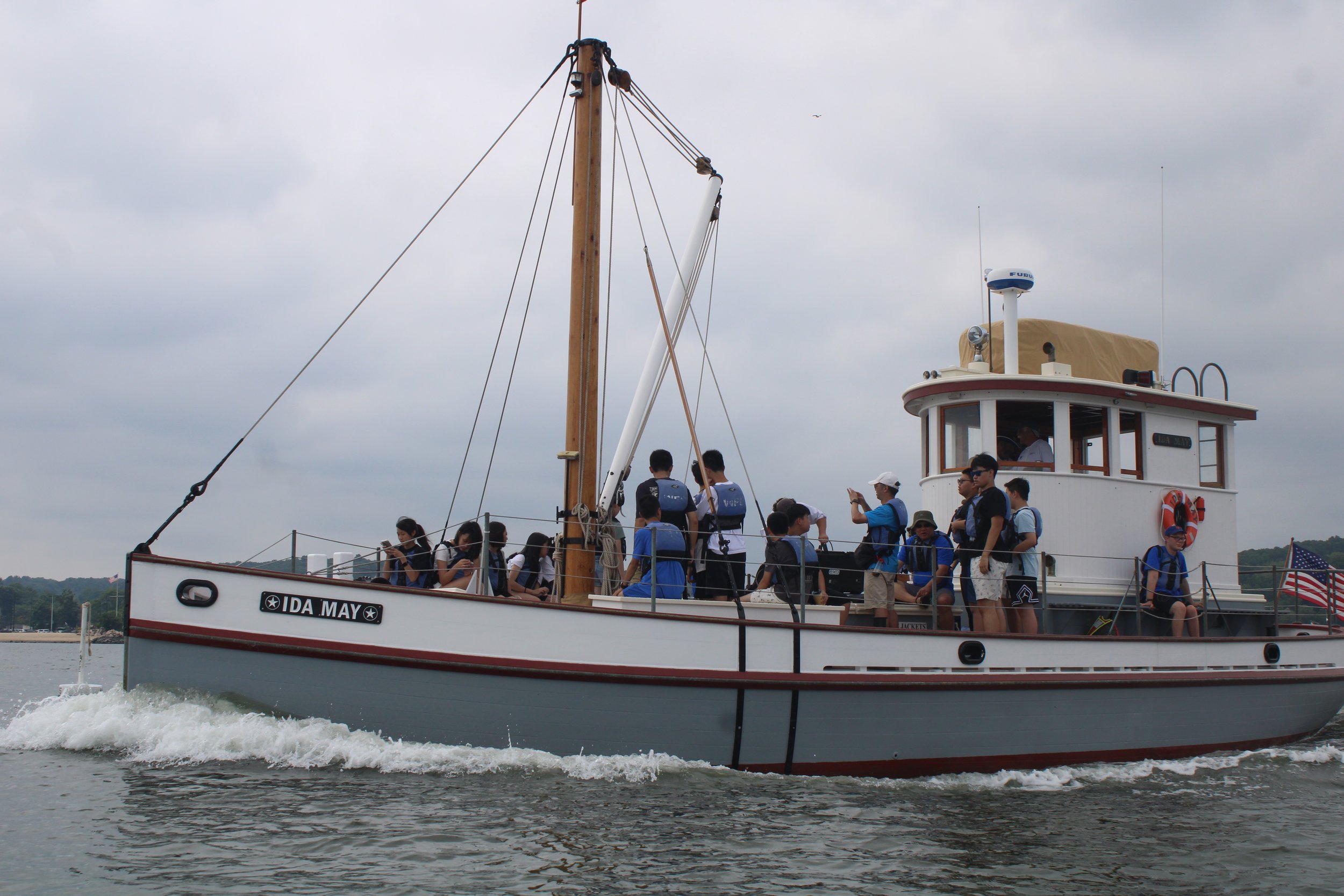
Education Programs
Marine Education Sails
This program takes place aboard our floating classroom, Christeen, a national historic landmark! Be part of an unforgettable marine learning experience while hoisting sails and gathering information about our local ecosystem. Whether your group wants to explore a touch tank, plankton collection, and observation or conduct higher-level water quality research, we can meet your specific group goals. (Max capacity is 20, including teachers and chaperones)
-
K-LS1-1: Use observations to describe patterns of what plants and animals need to survive
K-ESS2-2: Construct an argument supported by evidence for how plants and animals can change the environment to meet their needs
K-ESS3-1: Use a model to represent the relationship between the needs of different plants or animals and the places they live
2-LS2-2: Develop a simple model that illustrates how plants and animals depend on each other for survival
2-LS4-1: Make observations of plants and animals to compare the diversity of life in different habitats
3-LS2-1: Construct an argument that some animals form groups that help members survive
3-LS4-3: Construct an argument with evidence that in a particular habitat some organisms can survive well, some survive less well, and some cannot survive at all
3-LS1-1: Develop models to describe that organisms have unique and diverse life cycles but all have in common birth, growth, reproduction, and death.
3-LS3-1: Analyze and interpret data to provide evidence that plants and animals have traits inherited from parents and that variation of these traits exist in a group of similar organism
3-LS3-2: Use evidence to support the explanation that traits can be influenced by the environment
3-LS4-2: Use evidence to construct an explanation for how the variations in characteristics among individuals of the same species may provide advantages in surviving, finding mates, and reproducing
4-LS1-1: Construct an argument that plants and animals have internal and external structures that function to support survival, growth, behavior, and reproduction
4-LS1-2: Use a model or describe that animals receive different types of information through their senses, process the information in the brain, and respond to the information in different ways
-
MS-LS2-1: Analyze and interpret data to provide evidence for the effects of resource availability on organisms and populations of organisms in an ecosystem
MS-LS2-3: Develop a model to describe the cycling of matter and flow of energy among living and nonliving parts of the ecosystem
MS-LS2-4: Construct an argument supported by empirical evidence that changes to physical or biological components of an ecosystem affect populations
MS-LS2-2: Construct an example that predicts patterns of interactions among organisms in a variety of ecosystems
MS-LS1-4: Use argument based on empirical evidence and scientific reasoning to support an explanation for how characteristic animals behaviors and specialized plant structures affect the probability of successful reproduction of animals and plants, respectively
MS-LS1-5: Construct a scientific explanation based on evidence for how environmental and genetic factors influence the growth of organisms
MS-LS4-2: Apply scientific ideas to construct an explanation for the anatomical similarities and differences among modern organisms and between modern and fossil organisms to infer evolutionary relationships
Next Generation Science Standards
Our catalog of lesson plans has various customizable options that align with New York State Science Learning Standards (NYSSLS) and enable teachers to reach their curriculum goals.
The NYSSLS are K–12 science content standards. Standards set the expectations for what students should know and be able to do. The NYSSLS were developed by states to improve science education for all students. A goal for developing the NYSSLS was to create a set of research-based, up-to-date K–12 science standards. These standards give local educators the flexibility to design classroom learning experiences that stimulate students’ interests in science and prepare them for college, careers, and citizenship.
Facilitating Place-Based-Education
Our Education Department believes in the principles of Place-Based Education (PBE) which immerse students in the local heritage, ecology, culture, landscapes, and experiences, as a foundation for study across multiple fields of study curriculum. PBE emphasizes learning through participation, unique perspectives, hands-on activities, and personal connections.
The experiences our education programs provide are unique and valuable toward building a community of stewards that will continue to ensure that Oyster Bay, New York, and the surrounding ecosystems remain an available resource for generations to come.





